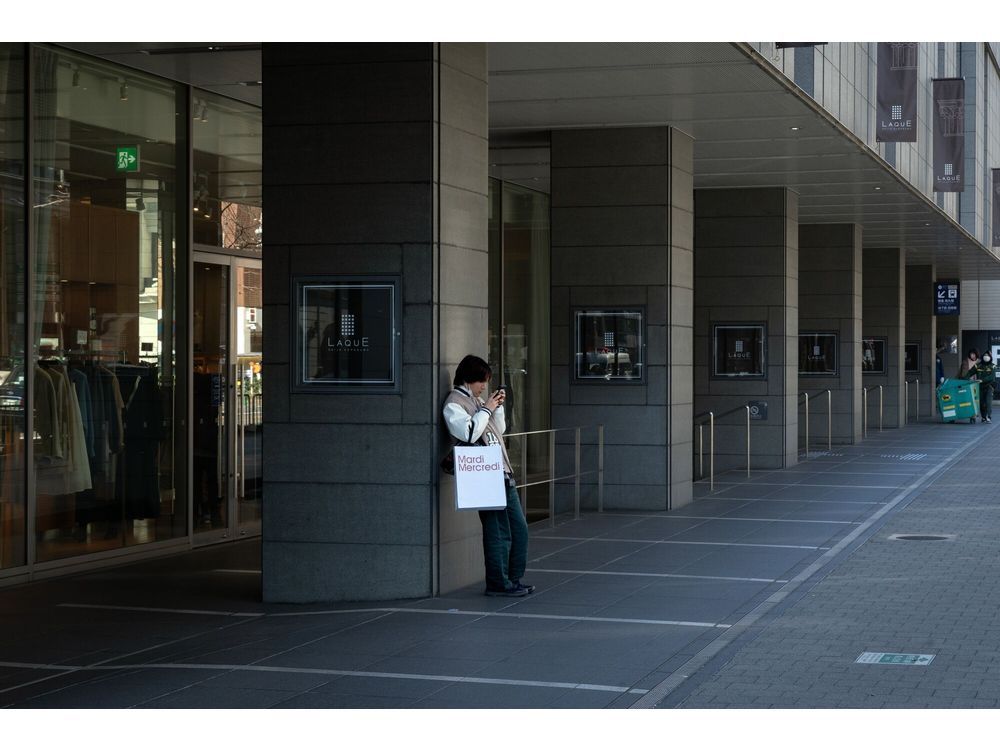
Article content
(Bloomberg) — The pace of price growth in Tokyo picked up, while other economic data suggested that Japan’s moderate recovery continues, backing the central bank’s economic outlook a week after authorities raised the benchmark rate again.
Article content
Consumer prices excluding fresh food in the capital climbed 2.5% in January from a year earlier, the fastest pace since last February, according to the ministry of internal affairs Friday. Overall price gains also sped up to 3.4%, the fastest clip in nearly two years, as the cost of fresh food jumped.
Article content
Separate data showed the labor market appeared to remain tight as the jobless rate slightly decreased to 2.4%, and jobs to applicant levels remained at 1.25, meaning there were 125 job openings for every 100 job seekers. Industrial production and retail sales data were also broadly better than expected.
Friday’s batch of indicators largely fits in with the market view that there will likely be another rate hike in about six months. The latest Tokyo inflation figures, a leading indicator for the national trend, indicate that inflationary pressure remains elevated, an outcome that supports the Bank of Japan’s decision last week to raise borrowing costs to the highest level since 2008.
“With food prices such as rice rising and government subsidies for energy disappearing, I think that consumers’ perception of inflation is much higher than the data show,” said Hideo Kumano, economist at Dai-Ichi Life Research Institute. “I think that the BOJ has no reason to slow down the pace of interest rate hikes and will continue to raise interest rates at regular intervals.”
Article content
According to economists surveyed by Bloomberg, July is the most likely timing for the BOJ’s next rate hike, with September seen as the next most likely month for action. In a risk scenario, the rate change could come as early as April, according to 45% of the surveyed analysts.
Gains in Tokyo’s cost of living were led by processed food prices as the cost of rice surged 73% from a year earlier. Fresh food also surged 24% as both fruit and vegetable prices continued to rise.
The central bank surprised many economists by upgrading its quarterly inflation projections more than expected last week. For all three fiscal year outlook periods through March 2027, the BOJ for the first time expects inflation to be at or above its price target of 2%.
What Bloomberg Economics Says…
“The pickup in Tokyo’s inflation in January will likely strengthen the Bank of Japan confidence that consumer-price gains are becoming secure around its 2% target — consistent with our view that it will continue to pare stimulus this year.”
— Taro Kimura, economist
Click here to read the full report.
With inflation still elevated and his public support edging down, Prime Minister Shigeru Ishiba decided to reinstate the government’s subsidy program for utility bills from this month, a development that will be reflected from February data, likely slowing price gains going forward.
Separate data released Friday showed Japan’s factory output fell 1.1% compared to the previous year in December and retail sales rose 3.7%, according to the industry ministry. Industrial production rose 1.3% last quarter, potentially supporting overall growth in the final three months of 2024, but economists broadly see the Japanese economy shrinking last year.
—With assistance from Erica Yokoyama.
(Adds economist comments, background.)
Share this article in your social network